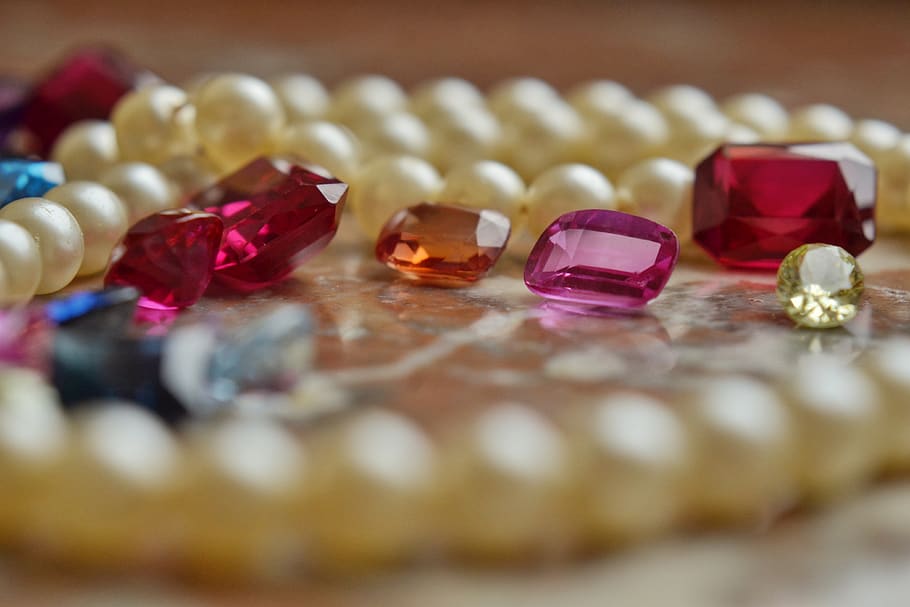
Natural Sapphire Colors – The Complete List of Sapphires
Sapphires are one of the most desired gemstones in the world. Along with diamond, ruby and emerald, sapphire is one of the most priced gemstones as well. These amazing natural beauties have managed to capture the love of humans throughout the history and will continue to do so as long as we exist. One major reason for the remarkable popularity of these is the range of natural sapphire colors that exists. Even though blue is the only sapphire color that many are familiar with, they come in a whole range of other colors as well.
As you may already know, I am from Sri Lanka and I take great pride about writing about sapphires as it is one of the main gemstone varieties found here. Sri Lanka was previously called Ceylon and Ceylon sapphires still have a unique position in the world of gemstones.
In this article, I will introduce you all the different colors of sapphires along with chemical properties which results in that specific color. Color is also the main factor when comes the value of a sapphire and more details on how color affects the price of a sapphire can be found here.
Following is the list of natural sapphire colors,
- Blue
- Pink
- Purple
- Yellow
- Orange
- Padparadscha ( A rare mix of pink and orange)
- Green
- White
- Black
- Color change
- Star sapphire
- Bi-color sapphire
As you may have realized, Red is not listed in the list. Sapphires are essentially made of the mineral corundum. Red color corundum is also available but those are specifically referred to as “Ruby”. Therefore, the term “Red sapphire” is not used in the gem industry as it is always referred to as “Ruby”. What you have to keep in mind is that both sapphire and ruby as essentially the same mineral and color difference is due to the presence of different trace elements. For rubies, presence of chromium as the trace element gives its red color. I will list the trace elements for all other colors below in the relevant section.
*Note – Different types of color enhancing treatments are very common for sapphires. I have listed those in the article I linked above. If you are buying a sapphire, I strongly recommend getting a valid detailed certificate which states the treatment type the stone has undergone.
Natural Sapphire Colors
Let’s go through the details of each natural sapphire colors one by one.
1. Blue Sapphires
Blue is the most famous sapphire color. Blue sapphires comes in a range of different color hues and the very intense color called “Royal Blue” is the most desired in many parts of the world. The color hue referred to as “Cornflower Blue” is the most sought after in certain countries including Australia. But the desirability of the exact color is a very personal choice.
The trace elements which gives corundum its blue colors is iron and titanium. Heat treatments to enhance the color are very common in blue sapphires. Natural blue sapphires without any type of treatments could be very expensive.
Following video shows most of the different hues of blue sapphire.
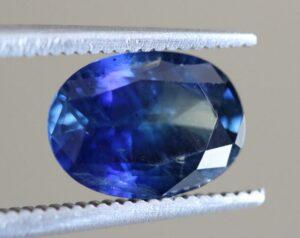
2. Pink Sapphire
The color of pink sapphires range from light red to light purple. It can neither be considered ruby nor purple sapphire. The saturation can vary from weak to strong and pink sapphire with strong color saturation are indeed very beautiful and expensive.
Chromium is the trace element which gives this stone its pink color similar to ruby. When there is a strong presence of chromium, the stone will be red and it will be pink when the chromium concentration is relatively low.
Heat treatments are common for pink sapphires as well.
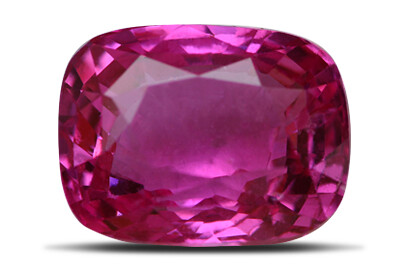
3. Purple Sapphire
Although some people get confused with pink and purple sapphires, purple sapphire always has purple as the dominant color. Its color can range from medium to dark reddish purple to violetish purple with weak to strong (vivid) saturation.
Purple sapphire gets it color when wither a small amount of vanadium is present as the trace element or in the presence of chromium, iron and titanium. When a considerably larger amount of vanadium is present, it will become a color changing sapphire (I will discuss more about color changing sapphires later in this article).
One unique advantage of purple sapphire is that most of them are free from any type of treatment.
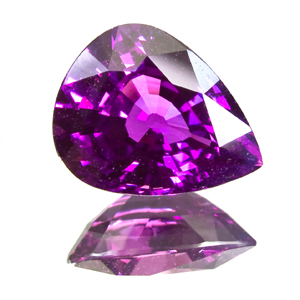
4. Yellow Sapphire
When only iron is present in a small amount, sapphire becomes yellow or green. Yellow sapphires range from yellow to orangish yellow, light to dark tones. Both yellow and orangish yellow with a vivid saturation is considered as the best yellow sapphire color but for some, canary yellow (medium to bright) is the best color.
Green can also be present in yellow sapphires and can range from light to dark greenish yellow. Presence of green will make the stone less desirable for many buyers.
Heat treatments to enhance the color are common for yellow sapphires. Some yellow sapphires are treated with irradiation also and if the yellow sapphire is treated by irradiation (x-ray), the color will deteriorate when kept in the sunlight for a couple of days. Therefore, I will not recommend buying a yellow sapphire treated with irradiation.
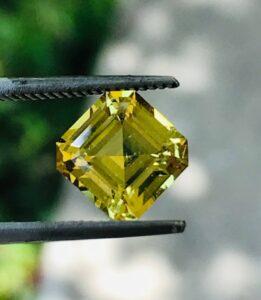
5. Orange Sapphire
Orange sapphires can be considered as a variation of yellow sapphires. When the color of yellow sapphire is actually a strong orange, some calls it orange sapphire.
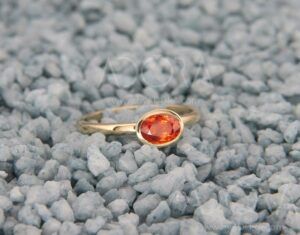
6. Padparadscha Sapphire
Padparadscha (also called padmaraga or pathmaraga) is a rare and unique type of sapphire. It has a mix of pink and orange colors. The name comes from the Sinhalese (main language in Sri Lanka) word for the lotus flower as the color of the stone resembles its color.
In all the gemstone varieties in the world, there is no other gemstone which can compete with this stone for its truly unique color. The color of the stone comes from both iron and chromium as trace elements.
Different types of treatments are common for padparadscha as well.
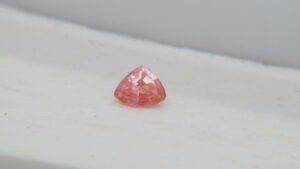
7. Green Sapphire
As mentioned earlier, presence of a small amount of iron makes a sapphire yellow or green. Sapphires with a uniform and saturated green color is actually a rare gemstone and it is considered as a collector’s stone. Hence, it can attract high prices.
Green is also present in some blue sapphires as a secondary color. But these greenish blue sapphires are less desirable. (Blue sapphires from Madagascar and Australia demonstrate a greenish blue while blue sapphires from Sri Lanka are free from any green).
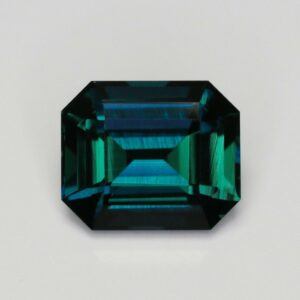
8. White Sapphire (Colorless Sapphire)
When the mineral corundum is not mixed with any trace elements, the white sapphires are created. Pure white sapphires are available as well as white sapphires with traces of other colors such as blue and yellow.
White sapphires with faint tints of other colors can be heat treated to make pure white sapphires.
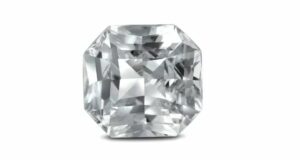
9. Black Sapphire
When corundum is very dark, it absorbs all the light and hence it is called a black sapphire. It is a stone found in abundance and not considered as a precious gemstones.
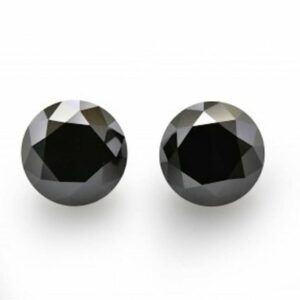
10. Color Changing Sapphires
As described earlier, a small presence of vanadium results in purple sapphires. With a relatively larger amount of vanadium, it will become a color change sapphire. The color change happens between blue and purple.
When vanadium is distributed equally in the stone, the color change will appear uniformly throughout the sapphire. When vanadium is present only in certain places, the color change will only be visible accordingly.
Purple sapphires colored with chromium, iron and titanium can also demonstrate the color changing effect sometimes but this change usually less stronger.
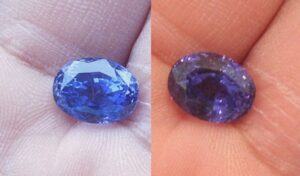
11. Star Sapphire
The presence of needle-like rutile inclusions in a sapphire cause the optical phenomenon known as asterism. The rough gemstones demonstrate glimpses of this effect and experienced gemologists, cutters and sellers can determine whether the stone is suitable to be cut as a star sapphire. The star is only visible if such stone is cut in the cabochon shape.
Star sapphire appears in all colors mentioned above. But green, yellow and orange star sapphires are very uncommon. In order for a star sapphire to be a quality stone, the star should be perfectly centered when viewed right from the top and the rays of the star should be of equal length. The rays should also be sharp and bright without being blurry and weak.
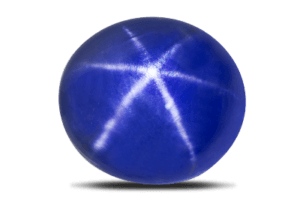
12. Bi-color Sapphire
Bi-color sapphires are formed when different trace elements get mixed during the formation of a sapphire. For example, when a sapphire is created perfectly pure and iron and titanium starts to get mixed after a while, the stone will become a white and blue sapphire.
If a sapphire is created only with iron and later get mixed with titanium, the stone will become a yellow and blue sapphire.
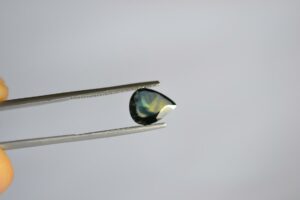
Pleochroism in Sapphires
Sapphires have this effect called pleochroism. Pleochroism refers to the effect of showing different colors when viewed in different directions. This is mainly relevant for gem cutters as the cutter should try to get the most desired color to the front direction of the stone. For blue sapphires, presence of either green or grey is common and the effect of these secondary colors should be minimized during the cutting process.
Final Thoughts
Since sapphires are a popular category of gemstones with a whole range of colors, the objective of this article was describe all natural sapphire colors. I hope you found this article useful and relevant and please feel free to drop any questions you may have.
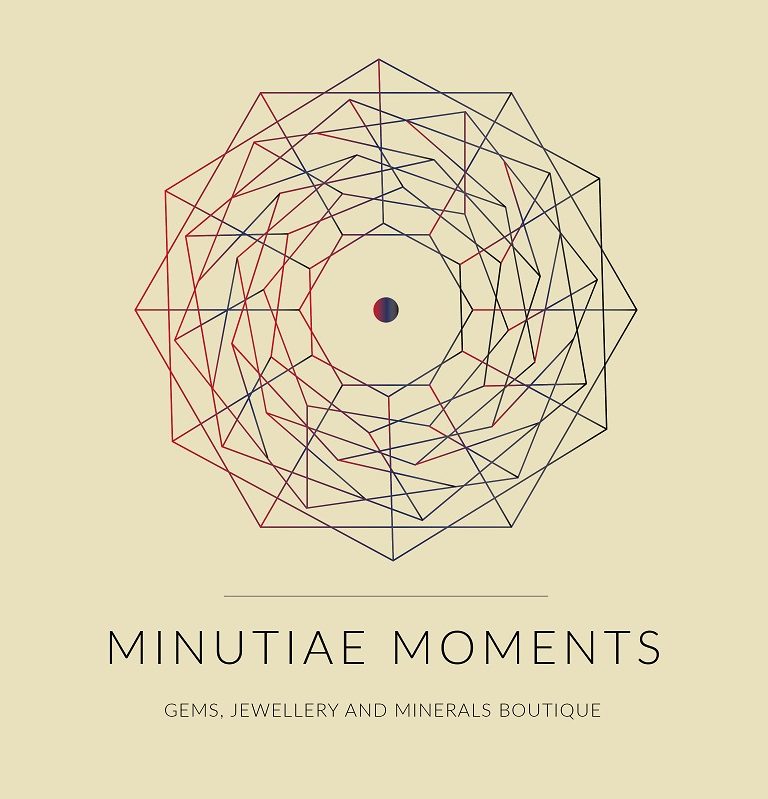
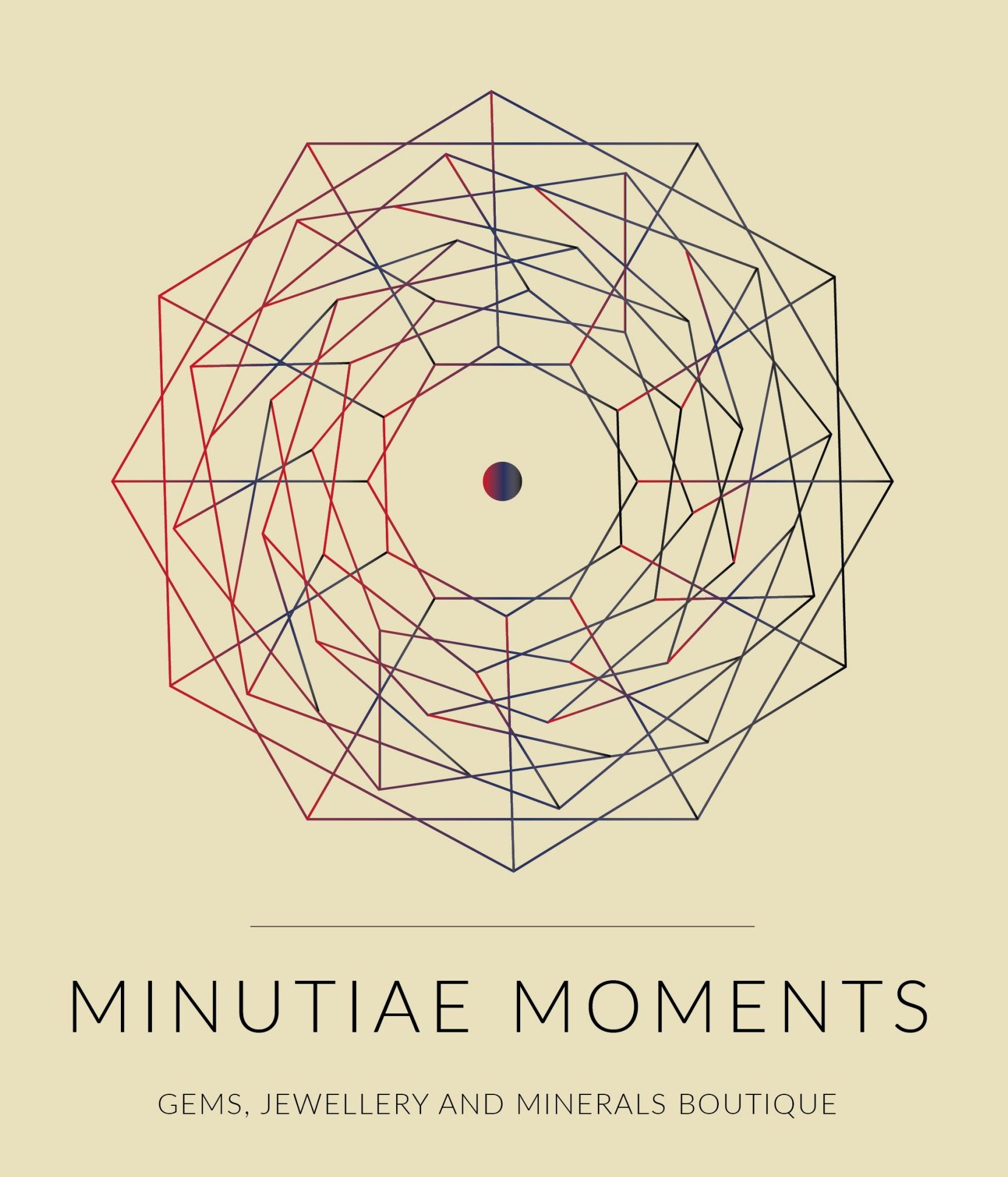
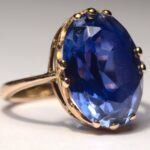
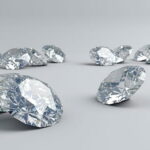
I have had 2 experiences with sapphires. My mother had a blue sapphire engagement ring and I stayed in a town in Australia, Coober Pedy, that is well known for mining sapphires. I found them fascinating . Your explanation of colors has given me a better understanding. Your information would be invaluable in the selection process of a sapphire. Thank you for sharing your expertisee.
Hi Stephen,
Thank you very much. I am glad that you got to learn something new from the post.
Hi Rajith,
Wow! I did not know there were so many different colours in the sapphire gemstone itself!
I liked the way you described the characteristics of all 12 of them.
I am truly amazed by them, especially the colour changing, star and bi-colour sapphires.
Many Thanks for sharing this amazing information with us. It will definitely make the purchasing of Sapphires easier in the future.
Kind Regards
Habib
Thank you Habib. Ya, I still get amazed by these creations of the nature when I learn new things. Glad I could share some of that amazement with you.